From barcelona to the Alps, powered by insulin
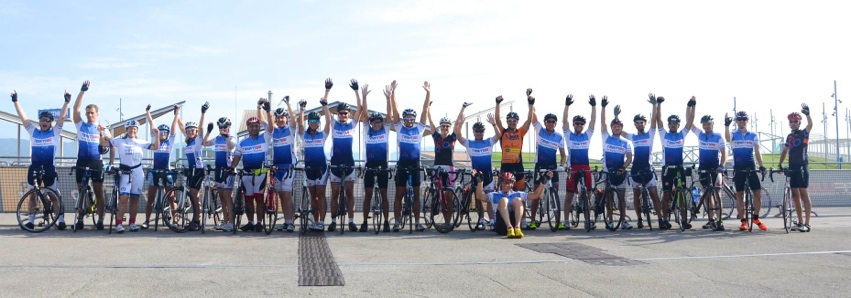
From the moment I sat down to dinner with my new team mates the night before the tour, I knew this was going to be an unforgettable experience. Across from me was Nenad, a type 1 athlete from Zagreb who had completed a triple ironman (which consists of a 11km swim, a 540km bike ride and then three marathons, back-to-back) in an incredible 51 hours, with only 20 mins sleep. And next to me was Chris, a consultant diabetologist who specialises in diabetes and sport – he was the team doctor. (He was also Scottish. In any adventure the doctor always has to be Scottish. That’s the rule). He turned out to be pretty quick on his bike, too.
We were in Barcelona for the start of the 2014 mHealth Grand Tour, a ride which would cover some 2,300km and 33,000m of ascent from Barcelona to Vienna, arriving in time for the start of the European Association for the Study of Diabetes (EASD) conference. The riders were from across Europe and the Middle East. There were elite riders and weekend warriors, type 1’s and type 0’s (the affectionate name by which people with diabetes – PWDs – refer to non-PWDs). But everyone was keen to see how far they could challenge themselves. Will I be able to keep up? What if I have a hypo (low blood glucose level) and hold everyone up? Maybe it was just me, but these were the questions I was asking myself before the tour. And jumping forward a bit, it all worked out just fine.
Once we had settled down to dinner it wasn’t long before we were playing our usual PWD game of “how many carbs in that?” but this time we all played it out loud, rather than just in our heads. We would try and justify our guesses (“imagine if you cut that roll into slices, it would be about the same as two slices of bread, with 15g of carbs in each, therefore 30g in total”) and arrived at a consensus. It was amazingly refreshing to be able to have a laugh about things like carb-counting with other people who have diabetes. My family and friends are all tremendously supportive of me and my condition, but you only really ‘get it’ if you’ve got it, as it were. It was great fun already, and this was before we had even got on our bikes.
That night we had a safety briefing, and for the riders who were doing all three stages of the tour (I was only doing the first stage), some information about the research experiment run by Imperial College. The riders, both type 1’s and a couple of type 0’s would be wired up to power meters, continuous glucose monitors (CGMs) and keep records of their food and weight during the tour, to see how multi-day endurance events affected their glycemic control. Along the way we noticed some interesting effects in the type 0’s – after one beer, the carbohydrates in the beer caused blood glucose levels to rocket to 11 mmol/l, which we were all very surprised about. I had previously thought that if you don’t have diabetes your blood glucose level wouldn’t get much above 8 mmol/l at worst. This made me feel slightly better about my own glycemic control.
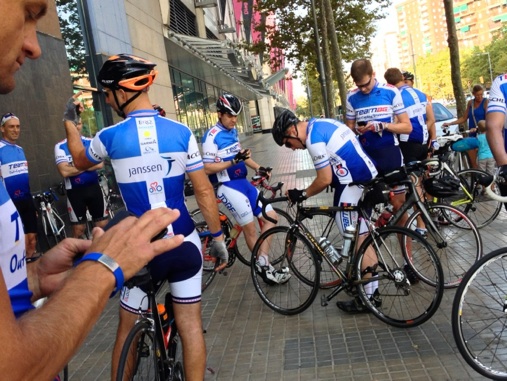
The next day as we checked our bikes and got our kit together there was a lot of chat about blood glucose levels. Some were OK, some were low, and like me, some were really high: I had been training a lot in the run-up to the tour and as I eased off training my body had reacted by needing more insulin. I hadn’t increased my background (basal) insulin enough the night before to take this into account. But there were lots of people on hand with tips and advice, and again, just being able to have a laugh with other people in the same boat was great.
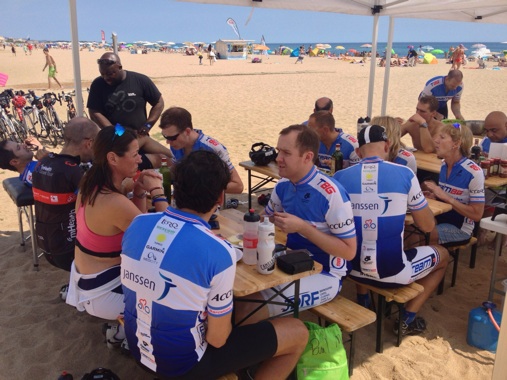
And finally, we were off. The group of 25 people rode together until we were out of Barcelona, and then the pack naturally split into three groups depending on pace, and I settled in with the medium-pace riders. The fast guys took off at a blazing pace, but were going so fast they failed to spot our lunch stop on the beach. For me this was one of the highlights of the trip. The music was playing, pasta was in full flow and some of the riders went for a dip in the sea. Had it not been for the 70km left to cycle in the afternoon I would have grabbed a beer from the bar. Instead I grabbed an electrolyte drink and got back in the saddle.
Each day was different – some days were long flat days, some were scenic routes along the coast with hills which the organiser described as “punchy”, but were better described as “exhausting” – reasonably short but steep ascents and descents for a few hours. We rode through lavender fields, beautiful villages and over mountain ranges. Sometimes we took it easy and stopped for coffee, sometimes we picked up the pace, taking turns at the front and ate up the kilometres. If someone in our group had a hypo or we passed someone in difficulty, we’d stop and make sure they were ok. It might be you next time.
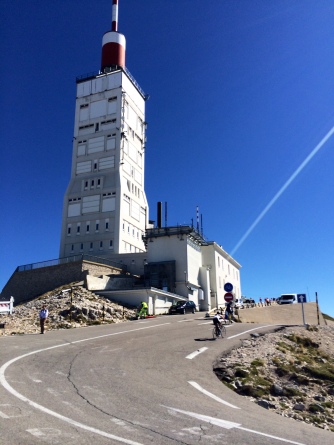
The final day of stage 1 included a trip up the infamous Mount Ventoux. You’ll probably recognise it straight away – it looks like someone put a lighthouse on the surface of the moon. It’s a gruelling climb – 2000m over 22km with an average gradient of 7.6% and as you can imagine, the chat around the dinner table the night before consisted of nothing but Ventoux. We ascended from Bédoin through a forest before emerging onto the lunar landscape for which it is famous. A quick photo stop at the top was followed by a long fast descent but then a further 120km until the end of the stage.
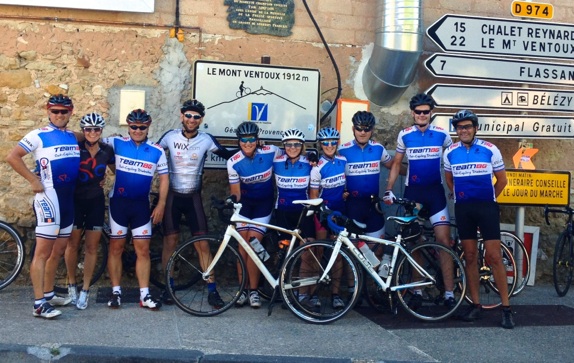
As we were sitting around the pool on the final evening of my stage, the conversation turned to HbA1c’s. HbA1c is the key blood test which measures your glucose control. A couple of the riders had HbA1c’s in the 5’s, which is amazing. To put this into context, the HbA1c range for people without diabetes is 4%-5.9%. My diabetologist thinks my HbA1c is OK, but it is always something I would like to reduce. Getting as low as 5% has always seemed impossible but these were people who have done Ironman competitions and had just completed 800km of cycling in five days and who had HbA1c’s in the 5’s. For me, that one brief conversation provided a huge amount of motivation to change the way I was managing my diabetes and reduce my HbA1c. And they didn’t get there by following the same routine and just trying harder – it turns out those riders follow a low-carb, high-fat diet, which I will be blogging about soon – watch this space.
If you have diabetes there is a tendency to beat yourself up a lot about your control. You want to keep your glucose level low, but not so low that you hypo all the time. And when you see your diabetologist and your HbA1c comes out higher than you were hoping, you say to yourself, “OK, I must try harder”, even if you’re doing everything you can to keep things well-controlled. While consultants can offer expert clinical advice, it’s nothing compared to the practical day-to-day tips other people with diabetes can offer.
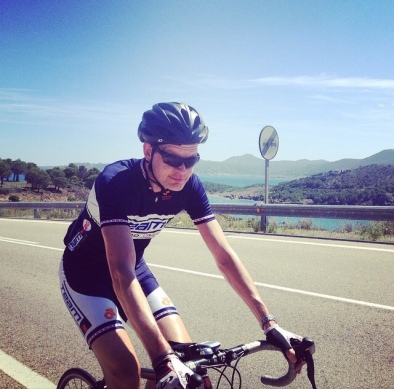
After my stage was finished and I had returned home, life felt rather pedestrian. I reflected back on the week: I met some amazing athletes, climbed hors category mountains, was inspired and motivated both to train harder and manage my diabetes better, as well as learning lots of new tips for diabetes management. Without wanting to sound too bombastic, it really was a life-changing experience.
EDIT: since writing, Team Blood Glucose no longer exists, but many of the members can be found on the Facebook group for sporty type 1’s